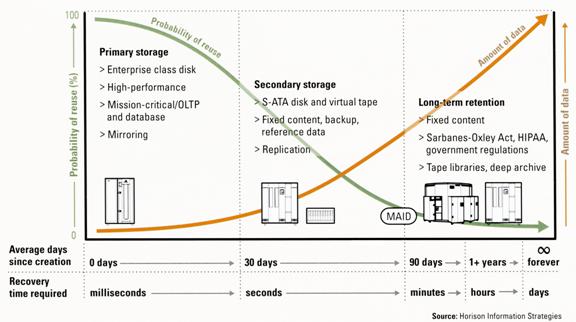|
New Storage Options for the Small and Medium Business
Information Lifecycle Management
If the aim of the new rules and regulations is to improve accountability and ensure the retention of data, Information Lifecycle Management (ILM) is a strategy to make these goals attainable. ILM is not a panacea; it is not storage management; it is not compliance-in-a-box. It is the process of managing and protecting information – something that every firm does, but typically not very well. Without policies to manage the increased tide of information, companies can quickly become inundated in their own data. It is both pointless and expensive to create mountains of backup tapes to be shoveled into offsite storage. Information must be sorted and treated according to its value to the firm. The availability and protection accorded to a given piece information should depend on its content, ensuring the most efficient use of resources. To comply with regulations, it should be retained for the specified interval in the most cost-effective manner until it can be deleted. Contrast this with the traditional model of data storage that treats all data the same (even e-mail spam) and saves everything to tape on a daily basis.
The Three-Tier Storage Model
Figure 2 presents the data lifecycle as realized in a three-tier storage model. The first tier is primary storage, comprising the high-availability, high performance disk technology used to serve mission-critical data. The second tier consists of low-cost disk arrays that serve reference data or information that is being transitioned to archival storage. The third tier represents long-term storage, including tape archives and data that is aged and deleted prior to migrating to tape.

Figure 2. Data Lifecycle and Three-Tier Storage Model (Click Figure to Enlarge)
< Previous Next >
|
